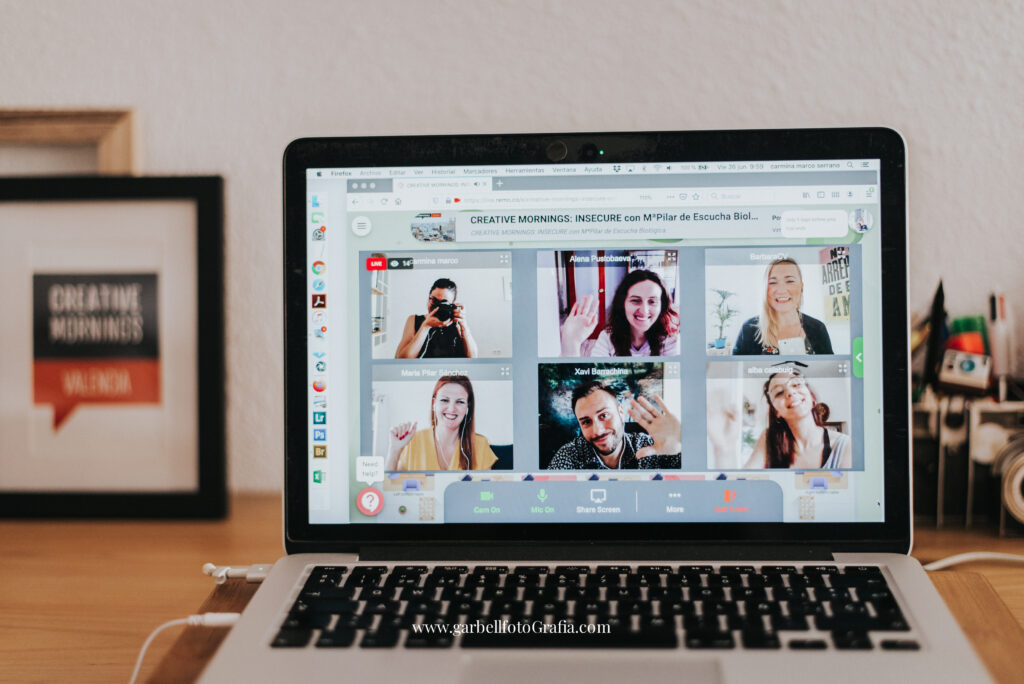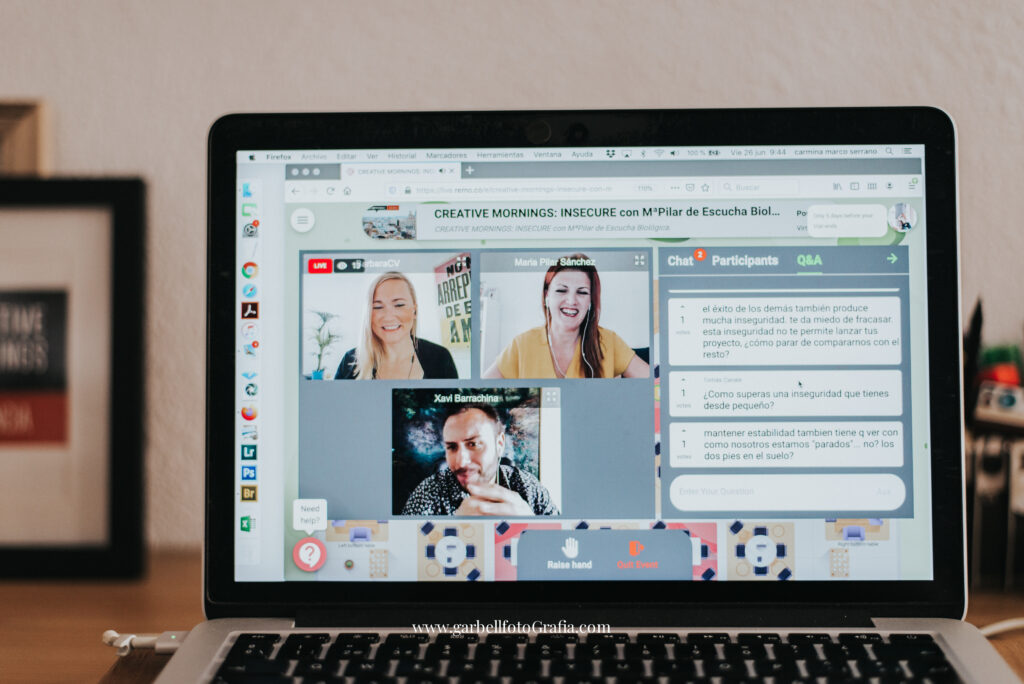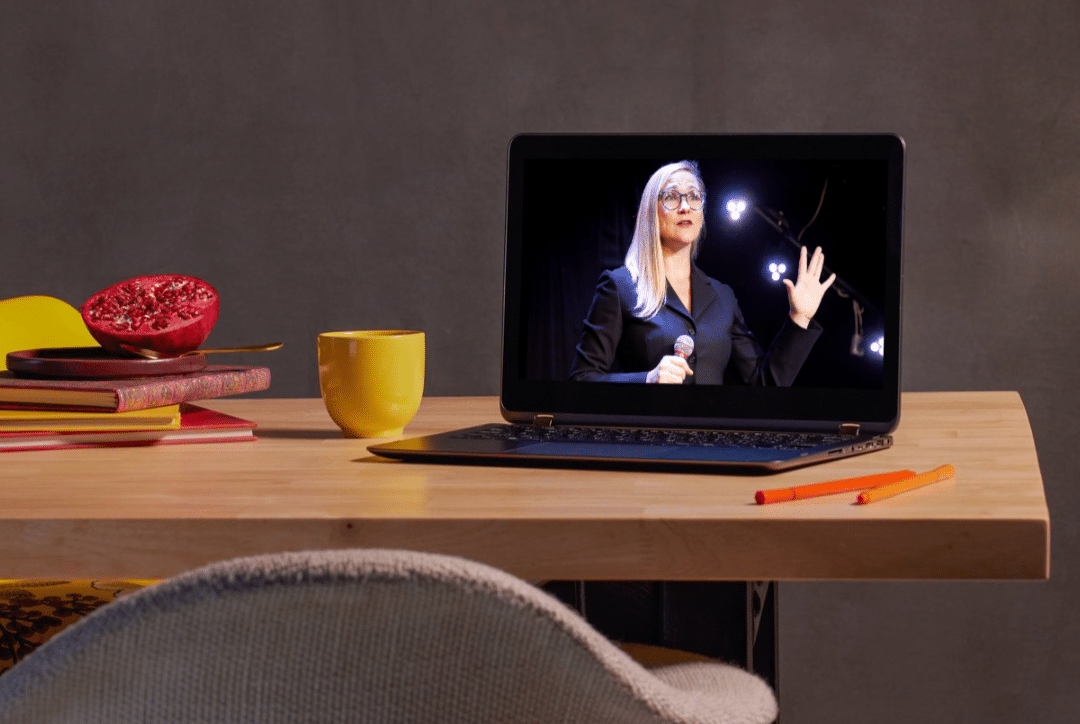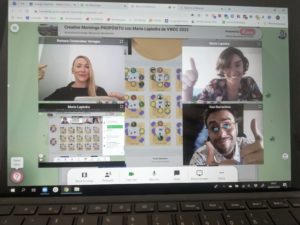We all strive for creative collaboration in hybrid teams. What few of us know, however, is that we have to design for it to happen. Hybrid meetings seem challenging for collaboration, but they are not a lost cause. A clear target, structure, engaging tools, and a strategy for remote inclusion drive innovation.
This blog article recaps the main arguments from a LinkedIn Live with Penny Pullan (Creative Collaboration Expert) and Barbara Covarrubias Venegas (Founder #virtualspacehero) about how to drive creative collaboration in hybrid teams

Penny Pullan is a creative collaboration expert working with leaders and teams. She helps with the challenges of our new world, to enhance collaboration and effectiveness across dispersed and hybrid teams.
Over the last twenty years, Penny has built and rolled out her Virtual Leadership model globally, along with collaboration tools and techniques. Her latest book ‘Making Workshops Work: Creative Collaboration for Our Time’, launched in July 2021, reached number 1 on both sides of the Atlantic on Amazon.
Connect with Penny on LinkedIn here.
🎯 What Are the Pain Points of Creative Collaboration in Hybrid Teams?
Despite many virtual meetings during the pandemic, we still struggle to design them creatively and engagingly. Connecting on-site and remote teams for innovation is challenging, especially without sharing the same room. So, is creative collaboration in hybrid teams just a lost cause? Luckily the answer is NO.
“It is all about designing for collaboration.”
🪄 What Are the “Magic Six Statements for Clarity” And How Can They Help Us Set Up a Creative Meeting?
The “magic six statements for clarity” provide six rules to clarify meeting targets and ensure success.
They include:
✨We are here to
Every good meeting starts with having a clear what it is about.“We are here to” shortly describes the high-level goal of the meeting.
✨Today we will
Knowing why we are in a meeting is great but not enough, we also have to do some expectation management with our participants.“Today we will” inform participants about the main objectives which meet the purpose of the meeting.
✨Our plan
Let`s make sure we are not getting lost on the way. “Our plan” shows the planned agenda of the meeting.
✨Who is doing what
What role am I expected to take in this meeting? By clarifying “Who is doing what” clear responsibilities within the meeting are assigned.
✨How do we work together
What is needed to collaborate effectively and successfully? “How do we work together” is about clarifying the general work set-up and establishing group norms (e.g., one conversation at a time)
✨What`s next
What are the next steps? “What`s next” defines the process of how actions get captured & who is doing what by when.
💡What Are Elements & Tools for Creative Collaboration among Hybrid Teams?
There are numerous tools that can be used to design for collaboration.
The golden rule is simple, choose the appropriate activities for the different stages of your workshop.
Let`s have a look at what that could look like:

➡️Stage 1: Getting started
For the first stage of the workshop and to get the participants started visual templates like the magic six statements for clarity, as described above, can be a great element to use.
➡️Stage 2: Idea Generation/Problem-solving
Life drawing on shared whiteboards like Mural, Miro or Collaboard can be a great way to build things together as a team.
➡️Stage 3:Consensus/ Decision Making
Tools like Mentimeter enable polls, quizzes, and word clouds to drive active participation in decision-making.
➡️Stage 4:Closing & Commitment
Besides a short wrap-up, meetings should close with a clear vision of the next steps and who is doing what and by when. Participants’ remarks can be verbally shared or written out on a sticky note and posted on a board for team members to read on their way out. Last but not least, meeting minutes ensure that everyone keeps informed and on the same page.



🔗How to Ensure You Include Remote Colleagues Properly?
Remote participants in hybrid meetings often feel disadvantaged compared to on-site colleagues. This is because facial expressions are crucial for connection, which differs through a camera.
Here are some tips on how to include your remote colleagues:
✅Get a buddy
Coupling up an on-site with a remote worker can be a great strategy to give voice to the person connecting virtually. It fosters not only a sense of belonging within the group but also promotes collaboration.
✅Practice “Remote first”
“Remote first” describes the scenario of letting remote people share their opinions first. The practice of “Remote first” can be a great way to counteract the lack of inclusion the remote workforce often suffers.
✅Follow up with remote employees regularly
Let’s not forget that people love routine, regular calls can be a powerful means of keeping remote employees motivated and engaged.
✅Set up channels for chat and collaboration
Zoom breakout rooms let employees chat virtually or have a virtual lunch or coffee break.A shared Slack channel lets employees recognize peers’ contributions, share ideas, or collaborate.
🔎How Can Learning Transfer Be Assessed in Hybrid Meetings?
No doubt- questions are key when assessing learning transfer in hybrid meetings.
🗨️How are you going to apply this?
🗨️What´s your perspective on that?
🗨️What have you taken in today?
Ask your hybrid team members questions and let them find the answers in the meeting.

Lastly, Commitment to action is the hardest step to ensure learnings are applied.
Mobilize and motivate your team members to apply their newly acquired knowledge.




